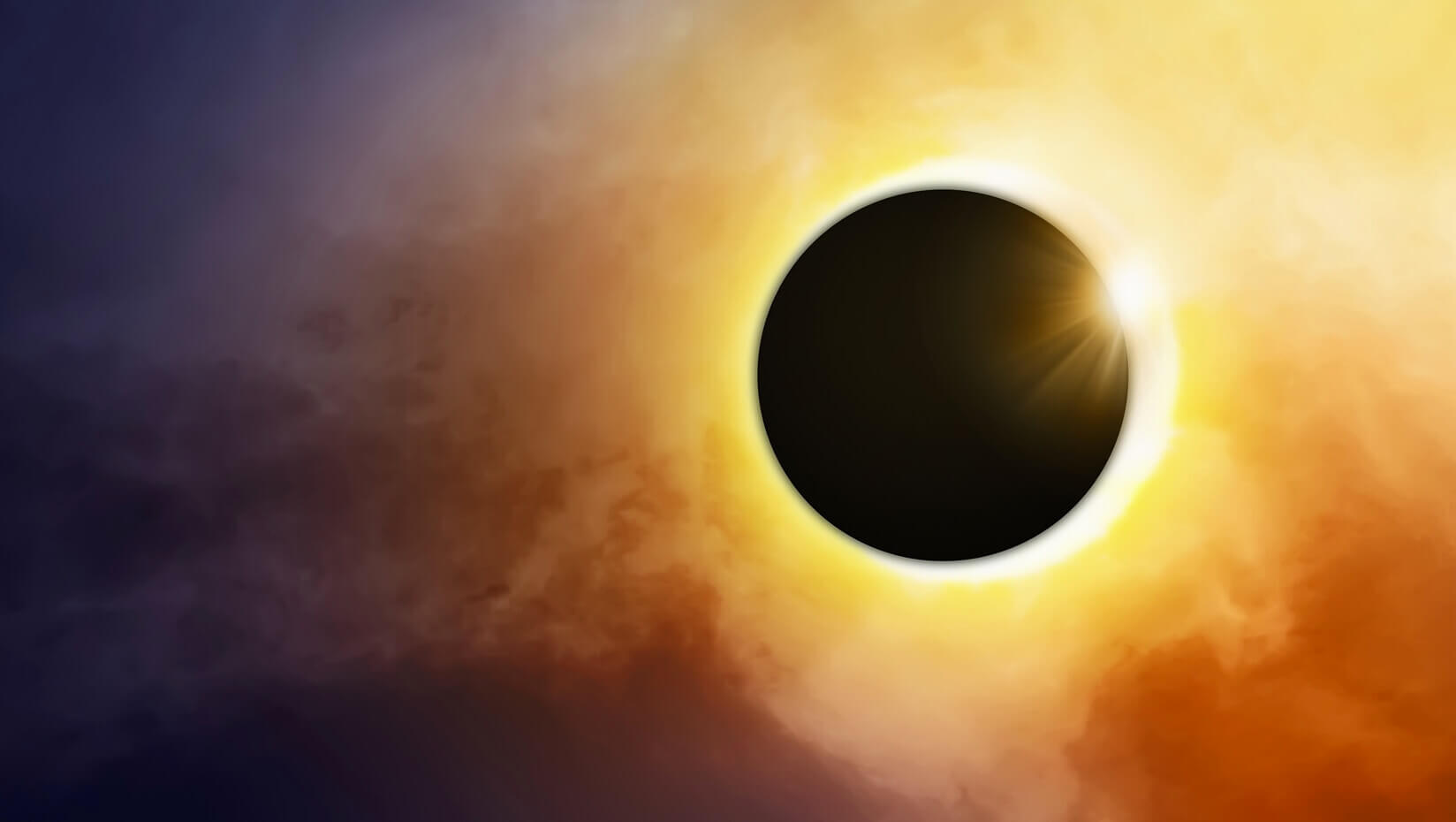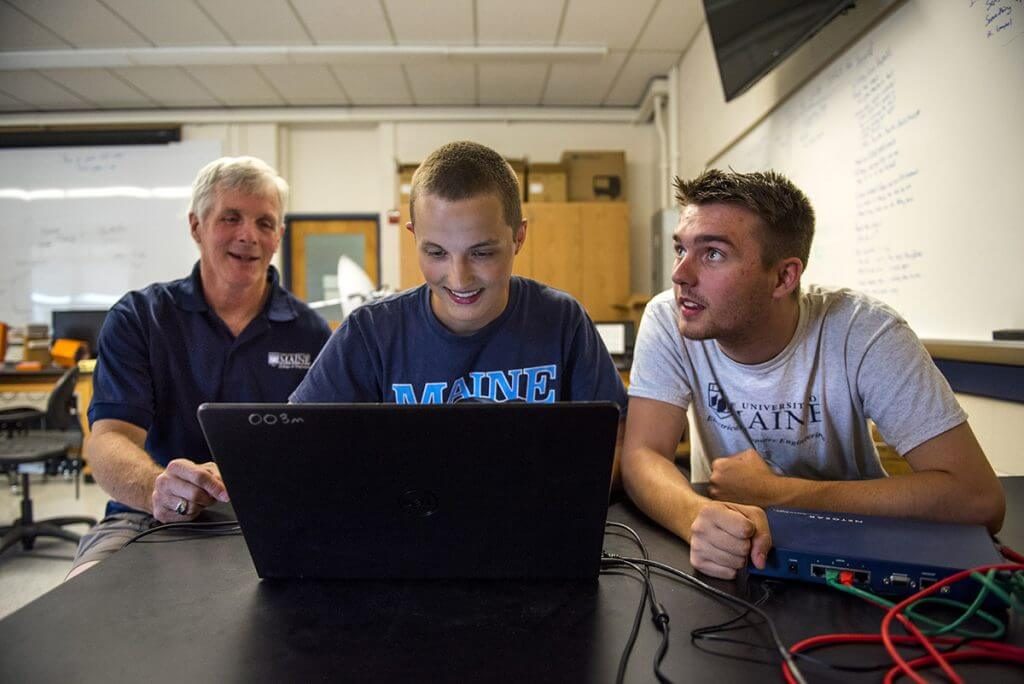
High Altitude Ballooning group to live stream eclipse at Clemson University
A University of Maine contingent will be in South Carolina on Aug. 21 to provide people around the world with a live view of the total eclipse from the edge of space.
The engineering group is part of the NASA-sponsored project, “Great American Eclipse,” during which students from 55 teams nationwide will launch high-altitude balloons to live stream aerial footage of the total solar eclipse to NASA’s website.
This summer, Derek Haas, a sophomore electrical engineering major, and Cameron Sullivan, a sophomore computer engineering major, have completed multiple practice launches with the UMaine ballooning equipment to prepare for the event.

The students from Old Town also have written computer code, done calculations and trudged into the woods to retrieve the balloon’s payloads — including video and still cameras, computers, radio modems and a GPS tracking device.
They are two members of the UMaine High Altitude Ballooning group that will be traveling to Clemson, South Carolina for the total eclipse. Others include engineering professor Rick Eason, staff member Andy Sheaff and about 12 other students.
UMaine is collaborating with Montana State University on the project at Clemson University, which is almost in the center of the 69-to-73-mile-wide swath in which the eclipse will be total.
UMaine’s two high-altitude balloons will ascend to about 110,000 feet above Clemson to capture the eclipse. Fifty-four other teams from 30 state-based Space Grant Consortia across the United States will do the same.
One by one, high-altitude balloons will be launched ahead of the path of the eclipse in Idaho, Wyoming, Nebraska, Missouri, Illinois, Kentucky, Tennessee and the Carolinas.
During the total eclipse, the moon will entirely block the sun for approximately two-plus minutes on a path moving from the Pacific Coast in Oregon (10:17 a.m. PDT) to the Atlantic Coast in South Carolina (2:47 p.m. EDT).
Being part of the event will be meaningful for the students in a number of ways, says Eason, including witnessing the eclipse, gaining hands-on technical experience and traveling.
Montana Space Grant Consortium director Angela Des Jardins says it’s exciting to provide a unique perspective of this rare phenomenon.
“The live-stream video will show the curvature of the planet, the blackness of space, and the whole of the moon’s shadow crossing the Earth during the eclipse,” she says.
“By live-streaming it on the internet, we are providing people across the world an opportunity to experience the eclipse in a unique way, even if they are not able to see the eclipse directly.”
The first balloon will be launched from a research vessel in the Pacific Ocean, which according to the NASA website, will “give the public one of the first glimpses of the moon’s shadow as it races toward the Oregon coast.”
In the U.S., the first point of contact of the solar eclipse will be at Lincoln Beach, Oregon at 9:05 a.m. PDT. The total eclipse will begin there at 10:16 a.m. PDT. The total eclipse will end near Charleston, South Carolina at 2:48 p.m. EDT and the lunar shadow will move off the U.S. at 4:09 EDT.
UMaine’s balloons will be two of the last to go airborne; the final balloon is slated to be launched from a Coast Guard vessel in the Atlantic Ocean.
Eason says since 2011, UMaine’s HAB has conducted nearly 75 launches. While several landed in Canada, as well as in trees, lakes and the ocean, he’s happy to report they haven’t lost any yet.
In Clemson, South Carolina, the eclipse will begin at 1:07 p.m. and end at 4:02 p.m. The total eclipse will commence at 2:37 p.m. and last 2 minutes and 37 seconds.
Clemson officials are expecting as many as 50,000 people on campus Aug. 21 to celebrate and watch the rare astronomical event. On the university’s Eclipse Over Clemson webpage a clock counts down the days, hours, minutes and seconds until the total eclipse.
The celebration and watch party will include talks by Eason and astronomy experts, a performance by the Clemson Tiger Band, cosmic tours at the planetarium and “tailgazing” near Lake Hartwell.
Haas and Sullivan — who according to the National Weather Service should experience an approximate 5–10-degree drop in temperature during the totality — say they’re thrilled to be using their skills to be part of the history-making NASA project.
The balloons and their payloads will experience a much colder environment. According to NASA, as the balloons ascend, the temperature will be as cold as minus 35 F.
Per FAA regulations, the payloads carried by the latex balloons must weigh less than 12 pounds. The balloons, that start out approximately 8 feet in diameter, are expected to ascend about 1,000 feet per minute and expand to about 30 feet in diameter before popping.
The cameras and other equipment — including the GPS tracker — then parachute back to Earth.
One of the UMaine balloons will be taking part in a NASA experiment called MicroStrat that simulates “life’s ability to survive beyond Earth — and maybe even on Mars.”
NASA will give UMaine two small metal cards with environmentally resilient bacteria dried onto their surfaces. One card will go up with a UMaine balloon and the other won’t.
The upper portion of Earth’s stratosphere — with its cold, thin atmosphere and exposure to radiation — is similar to Martian conditions, according to NASA. And during the eclipse, the moon will buffer the sun’s radiation and heat and block ultraviolet rays that are less abundant in the Martian atmosphere, which will lower the temperature even more.
When the metal card returns to Earth, scientists will study the effects of the exposure to Mars-like conditions on the microbes.
In 2014, the Montana Space Grant Consortium at Montana State University initiated the “Great American Eclipse,” project, which is sponsored by the NASA Science Mission Directorate and NASA’s Space Grant program.
The national network includes more than 900 affiliates from universities, colleges, industry, museums, science centers, and state and local agencies belonging to one of 52 consortia in all 50 states, the District of Columbia and the Commonwealth of Puerto Rico.
Beginning at noon Aug. 21, NASA Television will air a four-hour program, “Eclipse Across America: Through the Eyes of NASA,” which will include “live video of the celestial event, along with coverage of activities in parks, libraries, stadiums, festivals and museums across the nation, and on social media.”
The UMaine contingent is slated to arrive in South Carolina a few days ahead of the eclipse to scout launch locations and to meet with Montana and Clemson officials.
Eason says the goal is for the balloons to be about 80,000 feet directly above campus — for the best signal — during totality.
Eclipse fans are hoping for a sunny day Aug. 21 in Clemson.
“As long as there’s not a thunderstorm,” says Sheaff.
Shawn Laatsch, director of the UMaine Emera Astronomy Center and Jordan Planetarium, says total solar eclipses are one of the most spectacular events in all of nature. Earlier total solar eclipses were key to the discovery of helium and proving Einstein’s theory of relativity, he says.
“While this year it will not be total here in Maine, we will see 54.3 percent of the sun covered by the moon. Here in Orono, the eclipse will begin at 1:31 p.m. with the maximum coverage at 2:46 p.m. and then finish at 3:55 p.m.,” Laatsch says.
The Emera Astronomy Center has scheduled several events to mark the special occurrence. “Totality: Explore the Wonder of Eclipses” will be shown at 10 a.m. and 11:30 a.m. Aug. 21. And, a free viewing — weather permitting — will follow 1–4 p.m. at Clark Observatory. Safety filters and eclipse glasses will be available onsite.
The center also will show “Totality: Explore the Wonder of Eclipses” at 7 p.m. each Friday in August, and Laatsch will give a talk about the eclipse at 5:30 p.m. Wednesday, Aug. 16 at the Bangor Public Library.
Totality last occurred in Maine on July 20, 1963; Laatsch says the next time the state will experience a total solar eclipse will be April 8, 2024.
During the eclipse, there will be twilight-like conditions in all directions, and sometimes a few of the brightest planets and stars are visible, Laatsch says.
To safely view the eclipse, Laatsch says people should use special solar filters. NASA recommends checking the authenticity of viewing glasses — including that they have certification information with a designated ISO 12312-2 international standard and have the manufacturer’s name and address printed on the product.
Viewing glasses should be less than three years old and free of scratches. Sunglasses should not be used.
Contact: Beth Staples, 207.581.3777
